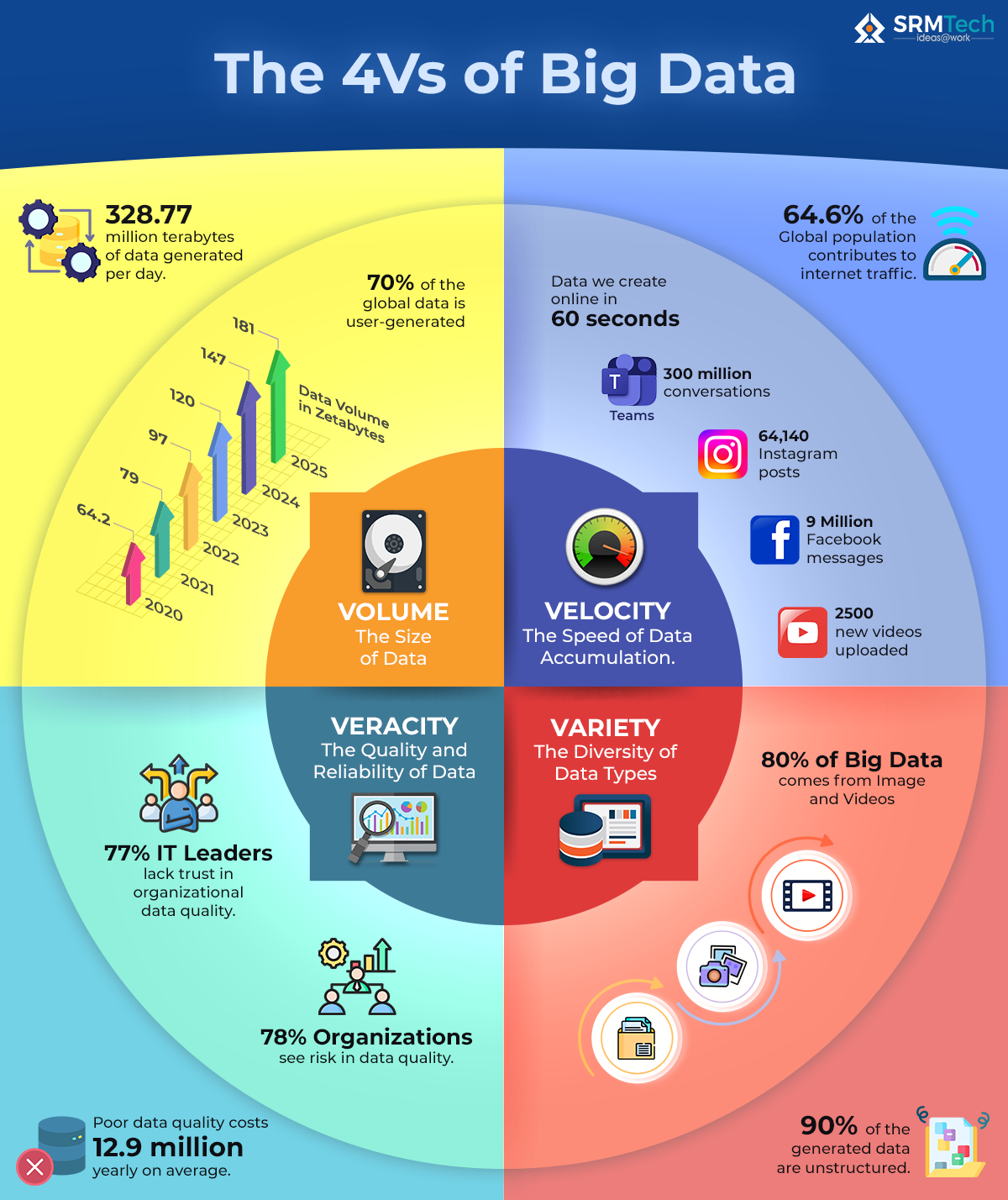Data is the foundation of our digital experiences today. In this age of widespread internet access and increased digitalization, we encounter digital information more frequently than ever, whether it’s through social media or business data stored in the cloud. All this vast and varied information is referred to as ‘Big Data’, and understanding the basics of Big Data is essential for businesses to achieve proficient outcomes.
One way to grasp the scale and complexity of Big Data is by considering the 4Vs: Volume, Velocity, Variety, and Veracity.
Volume – The amount of data being generated.
With technological advancements, organizations now have access to massive volumes of data from various sources, such as social media platforms, sensors, and transactional systems. This influx of data presents both potential opportunities and inhibiting challenges in terms of storage capacity, processing capabilities, and analysis.
Velocity – The speed at which data is being generated and processed.
In today’s digital age, where real-time insights are crucial for decision-making processes, organizations need to be able to capture and analyze data as it is being produced. The ability to handle high-velocity data streams allows businesses to gain timely insights that drive innovation and competitive advantage.
Variety – Diverse types of data that exist within big data sets.
Data can come in different formats, such as structured (e.g., databases), semi-structured (e.g., XML files), or unstructured (e.g., text documents). Dealing with such variety requires advanced data management tools and techniques to handle different data types effectively.
Veracity – The reliability and trustworthiness of the available data.
With an abundance of information comes concerns about its accuracy and quality. Organizations must ensure that they have mechanisms in place for verifying the integrity of their datasets before using them for analytical manoeuvres.
Check out the infographic below that illustrates these dimensions with real-life examples related to our everyday digital interactions.







